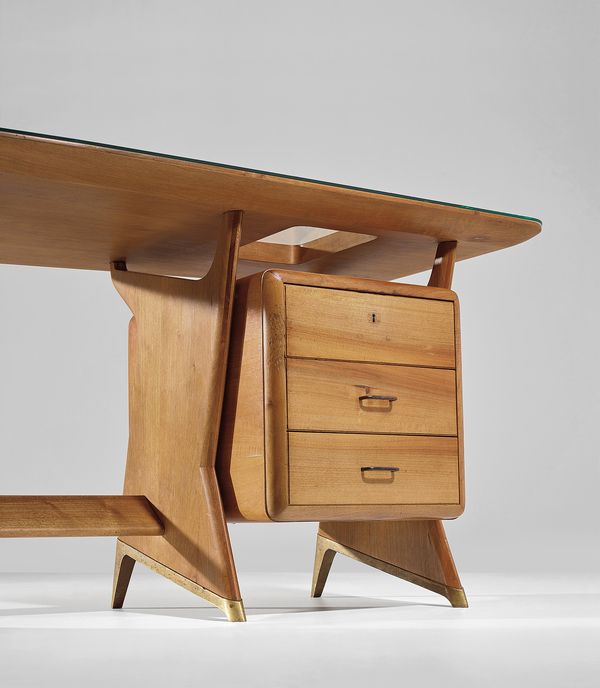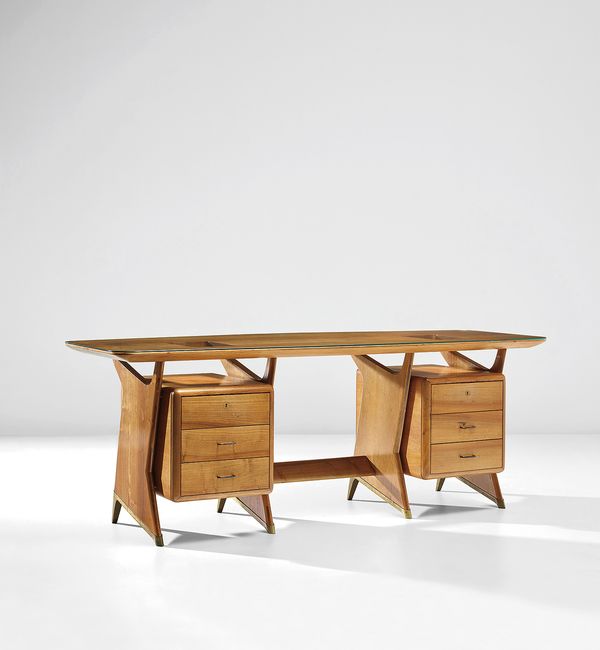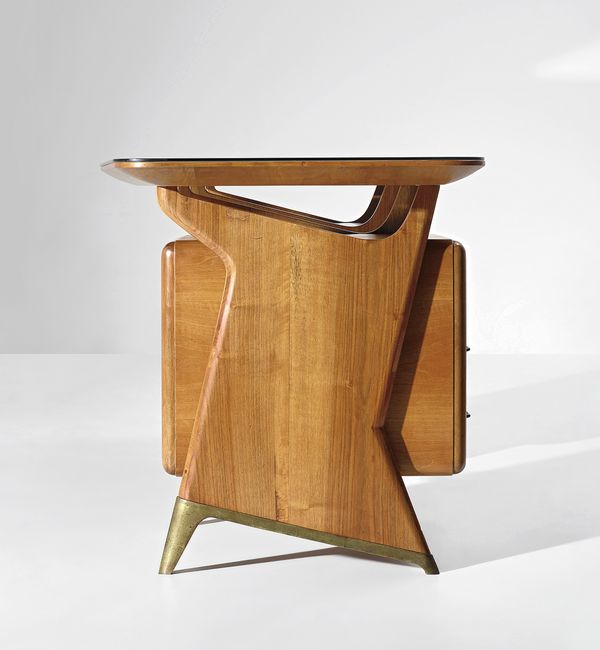Gio Ponti Important executive desk, circa 1951 (detail)
An expressive statement in formalist design that alludes to the commanding position of its intended user, this monumental desk demonstrates Gio Ponti's endless virtuosity of invention. The architect designed this unique piece as a fresh iteration of an earlier model designed in 1948 for the publisher of Domus, Gianni Mazzocchi, and made by Giordano Chiesa.
The seductive and vivacious variation at hand was executed a few years later by Egidio Prosperio. Both Chiesa and Prosperio were renowned ebanisti who had been lauded by Ponti in his book Amate l'architettura of 1957, as the two artigiani Ponti felt most confident with to handle private commissions or pezzi unici.
Gio Ponti Important executive desk, circa 1951
This ‘1951 Desk’ designed for a Como industrialist is not just a cluster of organic forms as it would occur in Alvar Aalto or even Carlo Mollino, but a manifestation of Ponti’s unique sensibility and obsession with the imaginary: "I believe that all furniture, while being functional, must also touch the imagination of both he who designs it and he who also observes it" (Gio Ponti, Amate l'architettura, Genova, 1957).
The outline of both the Mazzochi and the 1951 desks within their context in an office was first sketched out in four cartoon-like drawings published in the September 1949 issue of Domus. There we can see how the desk is engaged with one of Ponti's "organized walls," another invention that paved the way for his large scale architectural works of the later 1950s. With its suspended top, the desk immediately recalls the Villa Planchart of 1953 with its floating roof. Its overall profile is further lightened by two rectangular apertures that open a sightline to lateral drawer units below. Like the villa, both desks are icons of weightlessness and movement.
Gio Ponti Important executive desk, circa 1951 (detail)
The early desks turned out to be a template of Ponti’s serial production designs for Singer & Sons 1952, Altamira 1953, and Rima 1954. The serial pieces inherited his idiosyncratic synthesis of the programmatic and the poetic. His unrelenting umorismo is plain to see in both prototype desks and their serial offspring: it can be read in the tension between an imposing overall grand scale and playful tectonic elements such as the vertical supports akin to four large girandole. Unique to the 1951 version, the brass sabots are all connected in pairs with lower brass strips imparting additional momentum as well as a graphic elegance that enhances the pinwheel effect.


